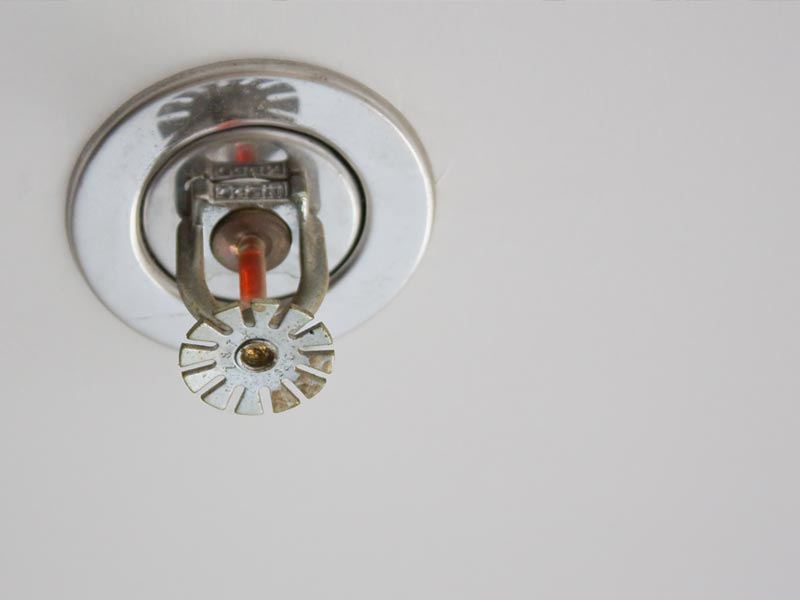Learn About Fire Sprinkler Systems
A fire sprinkler system is an active fire protection method, consisting of a water supply system, providing adequate pressure and flow-rate to a water distribution piping system, onto which fire sprinklers are connected.
Although historically only used in factories and large commercial buildings, systems for homes and small buildings are now available at a cost-effective price. Fire sprinkler systems are extensively used worldwide, with over 40 million sprinkler heads fitted each year. In buildings completely protected by fire sprinkler systems, over 96% of fires were controlled by fire sprinklers alone.
Operation: Each closed-head sprinkler is held closed by either a heat-sensitive glass bulb or a two-part metal link held together with fusible alloy. The glass bulb or link applies pressure to a pipe cap which acts as a plug which prevents water from flowing until the ambient temperature around the sprinkler reaches the design activation temperature of the individual sprinkler head.
In a standard wet-pipe sprinkler system, each sprinkler activates independently when the predetermined heat level is reached. Thus, only sprinklers near the fire will operate, normally just one or two. This maximizes water pressure over the point of fire origin, and minimizes water damage to the building.
A sprinkler activation will do less water damage than a fire department hose stream, which provide approximately 900 litres/min (250 US gallons/min). A typical sprinkler used for industrial manufacturing occupancies discharge about 75-150 litres/min (20-40 US gallons/min). However, a typical Early Suppression Fast Response (ESFR) sprinkler at a pressure of 50 psi (340 kPa) will discharge approximately 380 litres per minute (100 US gal/min).
In addition, a sprinkler will usually activate within one to four minutes of the fire’s start, whereas it typically takes at least five minutes for a fire department to register an alarm and drive to the fire site, and an additional ten minutes to set up equipment and apply hose streams to the fire. This additional time can result in a much larger fire, requiring much more water to extinguish.
4 FACTS:
- Many movies portray all of the fire sprinklers in a building going off all at once when just one sprinkler is activated, soaking everything and everyone in the place. This movie mistake is so common that many people actually believe that’s what fire sprinklers really do! This leads to people putting off the idea of having a fire sprinkler system fitted when really it is for your buildings safety.
- In the 5-12 minutes a fire department needs to respond, an uncontrolled fire will grow and spread through the home or business, causing tremendous smoke and fire damage.
- Smoke alarms are essential in every home, but unfortunately can only detect a fire. Fire sprinklers detect the fire and automatically control it, saving both lives and property in the first few minutes!
- Simply having a Fire Sprinkler System in your home or place of business can get you discounts on your insurance. Sometimes can save you up to 20% and in turn paying for your system over time!
2 Things to Know About Emergency Exit Lights
1. Monthly inspections.
According to NFPA101, your emergency lights and exit signs must undergo a 30-second test every month.
2. Yearly Inspections
NFPA101 also requires that emergency lights simulate being on battery backup for 90 minutes every year. Your Fire Sprinkler Services technician will take care of this for you, plus they will visually and physically inspect your unit. Resulting in providing you with detailed record keeping.
Johnson Controls Electronic Fire Sprinkler System

